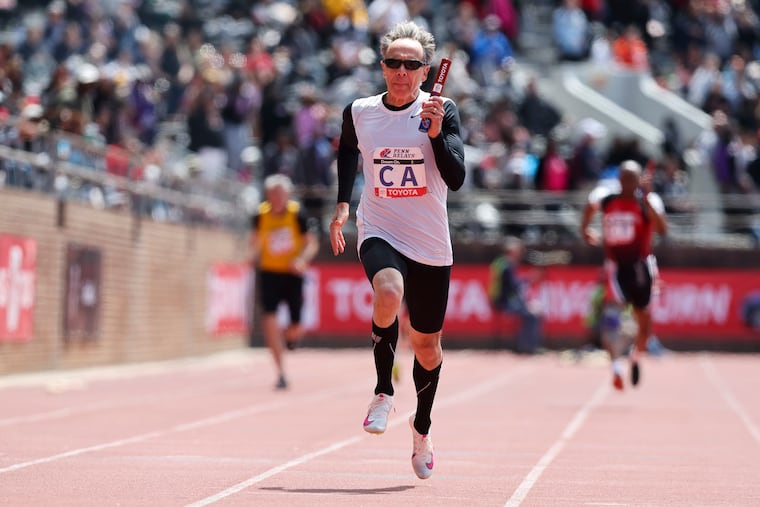Houston Elite’s 70-and-up sprinters prove that Penn Relays magic never ends
“It’s amazing that we can stay in it that long,” said Horace Hudson, a member of a septuagenarian 4x100-meter team that won gold.

Charles Allie has competed at 34 consecutive Penn Relays. The only thing that has kept the 76-year-old from Franklin Field was the two years the carnival was canceled because of the COVID-19 pandemic.
“It’s amazing,” Allie said. “I make the trip every year. I haven’t missed one since I turned 41.”
He doesn’t know if it’s a record, but if it is, it would just be another to add to an already long list. The Pittsburgh native and Hampton University alumnus has set nine masters’ division world records in the 200 and 400 meters, across various age groups. On Thursday at his 34th Relays, Allie won the men’s 100-meter dash in the 75-and-older age division with a time of 14.05 seconds.
“Charles, as a masters athlete, is one of the best in the world,” said his teammate, Anthony Baker.
» READ MORE: These Penn Relays will have more prestige in the track world, and more prize money for stars
Allie and Baker compete for the club Houston Elite, and Allie wasn’t the only member to take home some hardware on Thursday. His teammate, Don Warren, finished just behind him in the 100-meter dash, while Michael Kish won gold in the 100 in the 70-and-up category. Houston Elite’s 70-and-older 4x100 team — comprised of Ni Bryant, Warren, Horace Hudson, and Kish — also won with a time of 59.44, more than 4 seconds clear of second place.
Their team’s name is a bit of a misnomer. While the club originated in Texas, it has recruited top masters division runners from across the country to compete under its banner. The contingent that competed at the Relays mainly was made up of runners from Pennsylvania, New Jersey, and New York, and called itself Houston Elite East.
Since the members of the team live in different states, they train separately until they meet on the day of the Relays. After warmups in the morning, they spend a while practicing baton handoffs for the first time. Baker, who competed in the 4x400, decides who runs which leg based on each runner’s times.
Kish ran anchor in the winning 4x100, and then just a few minutes later was taking home gold in the 100-meter dash. He rounded out his day in the 4x400 as the team finished seventh.
“When you’re the anchor, you have the responsibility of holding the lead or catching someone, but it’s a lot of fun to come here to Penn, because this is the biggest crowd we’ll get to run in front of,” Kish said. “And the crowd is always behind you, whether you’re first or last. So it’s a great experience to come here. But once I start running, I don’t hear anyone.”
» READ MORE: The Penn Relays bring top athletes from around the world to Philly. Here are some Big 5 names to know.
Kish, who is originally from New Jersey, attended the Relays as a spectator as a student at Essex Catholic High School in Newark, which closed in 2003. He didn’t run in college and only started running competitively later in life.
“All my softball people retired, my hockey people said, ‘I can’t do it anymore,’ my basketball people got hurt, so I thought, ‘What can I do? Run.’ So I got back into running,” Kish said.
With all events on the same day, the condensed schedule can make recovery more difficult, which is especially important in the masters’ age groups. Some athletes pulled muscles or were otherwise injured during races.
But support from the crowd helped Houston Elite stay in the zone. Baker said he had 12 grandchildren in attendance to cheer him on.
“You feel fortunate,” said Hudson, who ran his first race at 14 and is now 71. “It’s amazing that we can stay in it that long.”